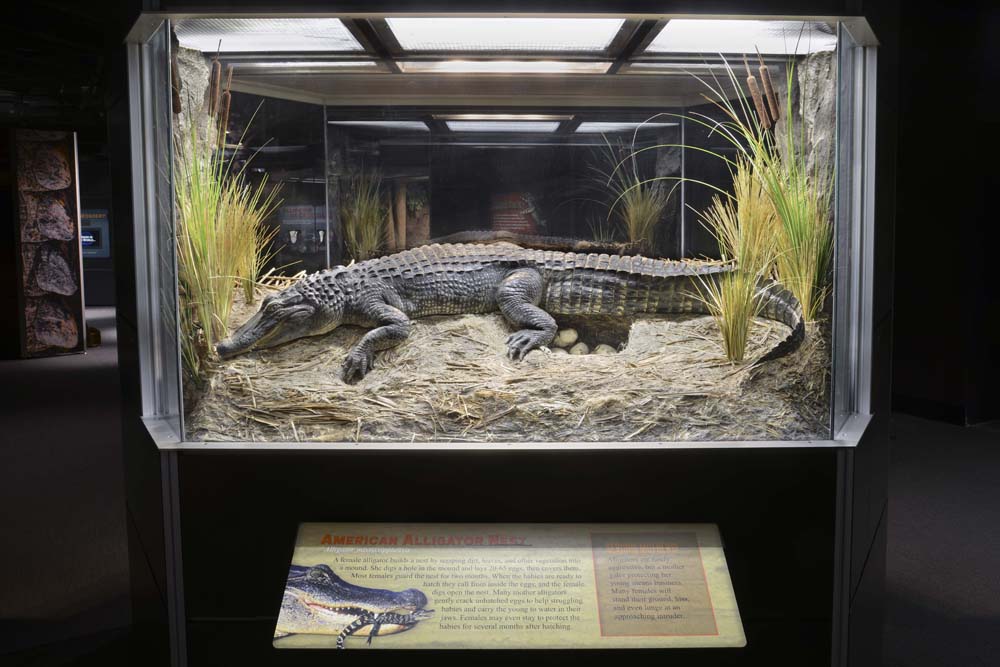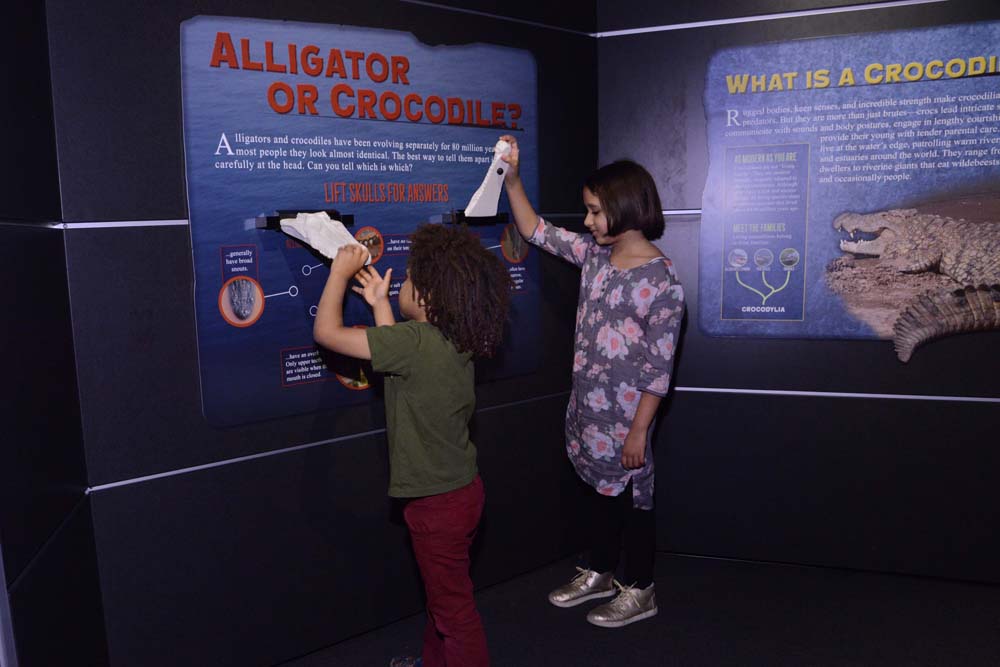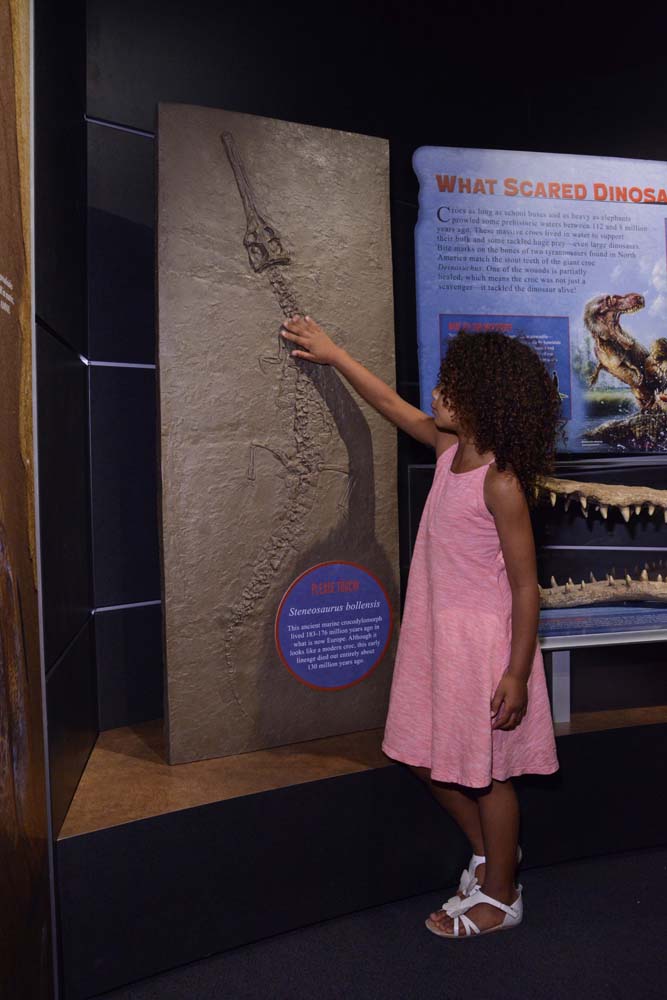Crocs: Ancient Predators in a Modern World (Photos)
Saltwater crocodile (Crocodylus porosus)

These are the largest living crocodilians and are found in coastal areas of Southeast Asia and Australasia. Males regularly grow to more than 15 feet (4.6 meters), and exceptionally large specimens can top 18 feet (5.5 meters) and weigh 2,000 pounds (907 kilograms). This model is a true-to-life sculpture of Gomek, the largest "salty" ever exhibited in the Western Hemisphere.
American alligator (Alligator mississippiensis)

A diorama shows a life-size model of an American alligator guarding her nest.
[Read the full story on these predators and their ancient relatives.]
Crunch capacity

Visitors are able to test their strength against a croc's "crunch capacity."
Touchable skull replicas

Touchable skull replicas help visitors learn how to tell an alligator from a crocodile.
Steneosaurus bollensis

Visitors can touch this replica of an ancient marine crocodylomorph that lived 183 to 176 million years ago in what is now Europe.
[Read the full story on these predators and their ancient relatives.]
Get the world’s most fascinating discoveries delivered straight to your inbox.
Steneosaurus bollensis

Although it looks like a modern croc, this early lineage died out entirely about 130 million years ago.
Thecachampsa skull replica

Thecachampsa americana lived between 13 and 6 million years ago on what is now the east coast of the U.S. Fossil specimens have been found in Florida and South Carolina. This croc grew to about 19 feet (5.8 meters) in length and appears to be a close relative of the modern Tomistoma. It may have lived in brackish and salty waters and was adapted to eating fish.
[Read the full story on these predators and their ancient relatives.]



